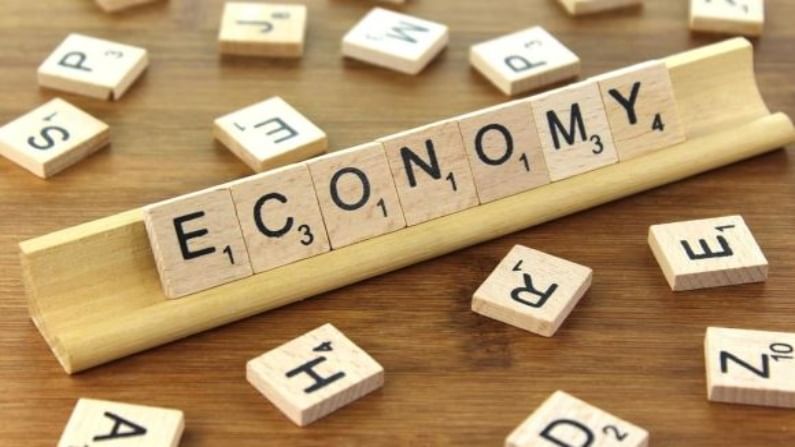Covid-19 second wave turns V to U; apprehension for the third
Several national and global bodies have trimmed India’s GDP growth estimates after the second wave and a third one could send growth even southwards

What was V-shaped in February but turned into U-shaped in May? No prize for guessing. It is the shape of the graph of the economic recovery that India is heading for in the current financial year. While a V-shaped graph indicates a sharp rebound of economic activity after hitting a bottom, a U-shaped one indicates a protracted, drawn-out struggle to rise almost along the sides of a bathtub involving slippery movement.
With the second wave triggering state-specific lockdowns that shook business confidence in most parts of the country – east, south and north – with the sole exception of the west, where the moods improved, according to a survey by the National Council of Applied Economic Research (NCAER), it is nothing to be surprised of.
Go for growth
The Reserve Bank of India has constantly tried to maintain an accommodative stance – a strategy to boost growth with low interest rates and liquidity support – even at the risk of suffering a rate of inflation that pierced the upper level of the tolerance band of 6%.
However, unemployment and low consumer spend characterised the first quarter of the current financial year as most households preferred to save for the rainy days, amid intense discussion about a possible third wave.
As the second savage run of the Covid-19 pandemic hit the country hard, several influential national and global bodies downgraded the growth estimates of the economy sharply for FY22.
While most agencies had predicted double-digit growth for FY22 towards the beginning of 2021, almost all of them settled for single-digit rates by the end of the second wave.
IMF outlook
One of the sharpest corrections came from the International Monetary Fund (IMF). It revised its growth projections from 12.5% in April to 9.5% in July. Earlier this week, IMF chief economist Gita Gopinath cautioned that the growth estimates can be further pruned if a third wave of pandemic compels governments to resort to another phase of lockdown.
Other global agencies such as the World Bank, OECD (Organisation of Economic Cooperation and Development) and Asian Development Bank also trimmed India’s GDP growth projections in FY22 to 8.3%, 9.9% and 10%, respectively.
Their earlier projections for growth were 10.1% for World Bank, 12.6% for OECD (projected in March) and 11% for ADB (projected in April).
There is a widespread feeling that agriculture that stood out among all sectors of the economy and industry would give GDP the tailwinds this year. The service sector, of which the hospitality, tourism and entertainment industry were the hardest hit in the pandemic would continue to be affected this year too. Significantly, all these sectors are labour intensive.
Among the Indian agencies, NCAER projected India’s real GDP growth for 2021-22 in the range of 8.4% to 10.1%.
In June when different state governments were relaxing restrictions after the second wave, this 65-year-old Delhi-based thinktank said Indian economy could be set back by two years of growth with the GDP just about reaching Rs 146 lakh crore in 2021-22 which was its level in 2019-20.
RBI view
In the first week on June, after the bi-monthly monetary policy committee meeting, RBI said it pruned its GDP growth estimate in the current year from 10.5% to 9.5%.
The central bank had also said that rural demand remained strong and a normal monsoon, as announced by the Indian Meteorological Department, would aid the growth. However, later hesitant rains affected the sowing of the kharif crop in different parts of the country. Rice, sugarcane, sorghum, maize, cotton are some of the main kharif crops.
“GDP growth for the year (FY22) is expected to be 8.8-9% with GVA (gross value added) growth of 7.8%. The main drivers of the economy would be agriculture and industry,” Care Ratings agency said in its Economic Outlook for 2021-22 earlier this week.
The services sector would fail to reach its potential at 8.2% growth as the second lockdown affected sectors like hotels and restaurants, tourism, retail malls and entertainment, Care said.
Global rating agencies
S&P Global Ratings cut India’s growth prospects in FY22 from 11% earlier to 9.5% in June.
One of the sharpest downward revisions from another global ratings major Moody’s, which, in June, slashed projections from 13.7% earlier to 9.5% — a cut by 420 basis points.
CEA’s optimism
Chief economic adviser to the government of India KV Subramanian said during the week the country’s real GDP growth for 2022-23 can range between 6.5% and 7%.
Supply-side reforms driven by the Centre in agriculture, labour, export production-linked scheme, MSME, privatisation of a few PSU banks and the setting up of the bad bank could help fuel growth in the coming years, Subramanian said.
In FY21, the Indian GDP shrunk by 7.3%. In the preceding year FY20, the economy lumbered at 4%.

